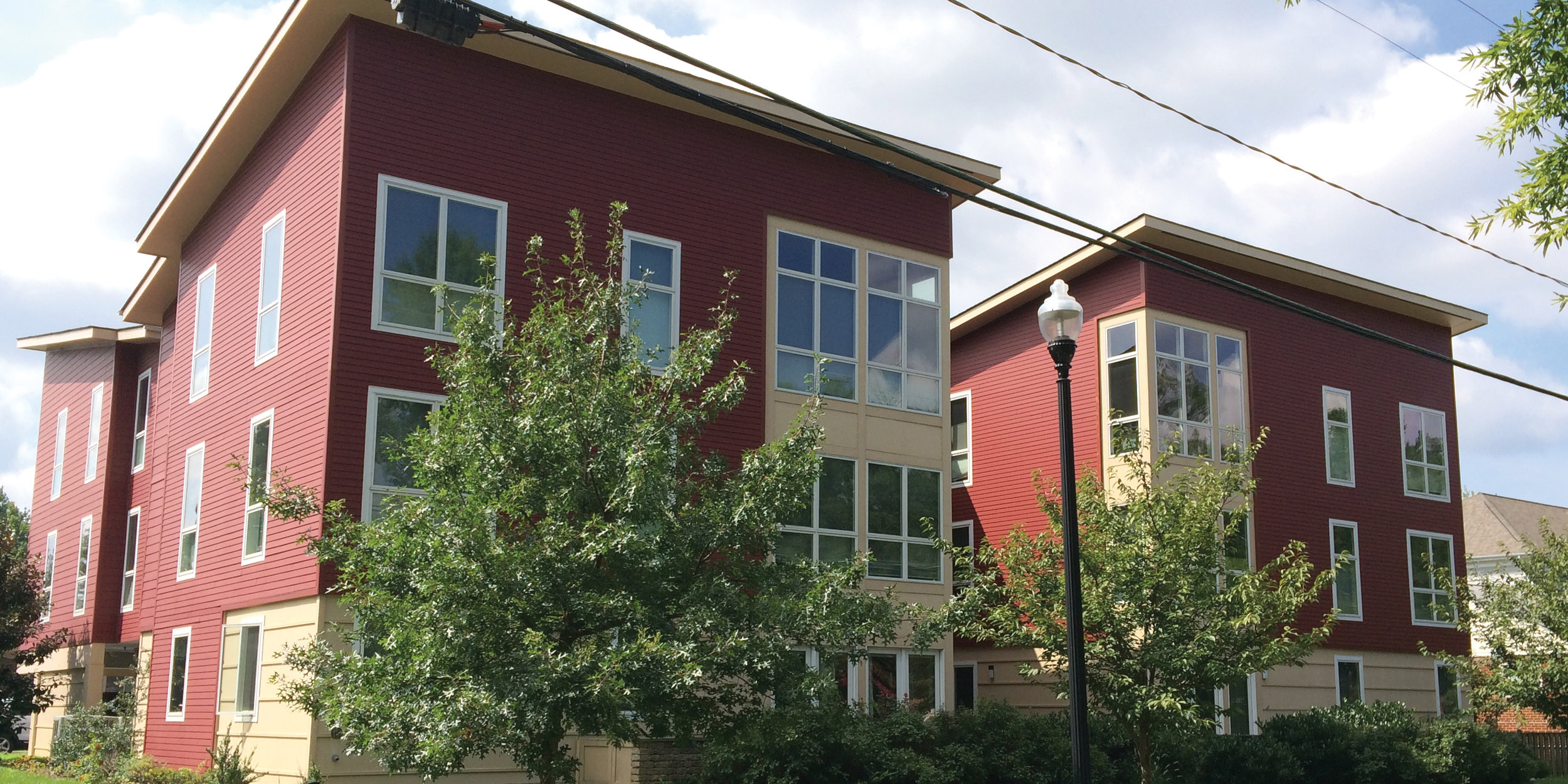Arlington’s housing problems are no secret. Many young professionals work multiple jobs to afford rent. Seniors wonder if they will be able to retire in the community where they’ve lived for their entire adult lives. Parents wonder if their children who are growing up in the Arlington school system will be able to afford living here after college. Everyone has a story of a friend, colleague, or family member who has left Arlington for cheaper real estate elsewhere.
But are the problems solvable?
A group of private and nonprofit lenders, realtors, and developers met with County representatives October 3 for a roundtable conversation hosted by the Alliance for Housing Solutions to discuss options for providing homeownership opportunities for middle income home buyers in Arlington. The conversation quickly focused in on the challenges for developing what are known as Missing Middle housing types.
“Missing Middle” was coined by Daniel Parolek of Opticos Design, Inc. in 2010 to define a range of multi-unit or clustered housing types compatible in scale with single-family homes that help meet the growing demand for walkable urban living. Types of homes include smaller-scale condos, townhomes, duplexes, multiplexes, and structures such as apartments above garages or in backyards.
Michelle Winters, AHS Executive Director, said that the term is often also used to describe the lack of housing options for middle income households, which in Arlington is considered between $66,000 and $141,000 per year (or 80-120 percent of Area Median Income). Missing Middle housing types are often more affordable to middle-income households by design because they are smaller than modern single-family homes and often have fewer amenities than luxury condos.
More than 30 people participated in the roundtable. Among some of their suggestions are the following:
Develop More Multiplex Homes
Bob Adamson, a realtor with McEnearney Associates, Inc., said his clients are often looking for single-family homes, “but when they find out about duplexes or townhomes, they’re excited.”
“There is a huge demand for people to have something with a little bit of outdoor space,” Adamson said. “They want to have a pet, a cookout, and a safe place for kids to play.”
Participants pointed out the success of Davis Place, which was built in 2009 by nonprofit developer AHC, Inc. The award-winning, 10-unit condo is on a quiet residential street within walking distance to Walter Reed Community Center and Columbia Pike. It could serve as a model for other multiplex developments.
Kathryn Scruggs, a retired teacher and longtime affordable housing advocate, said she often hears from Arlington Public School teachers who would be interested in this type of home. She hopes the county will consider updating zoning regulations to make it easier for developers to meet this demand.
Ease Zoning and Permitting Regulations
Duncan Jones, Director of Land at NVUrban (NVR, Inc.), said that if Arlington County’s zoning laws allowed for more multiplex homes his company would develop them.
The group noted several specific permitting and zoning issues that keep Arlington from moving forward with developing Missing Middle homes, including setbacks (the minimum distance a building can be from the street or other buildings), tandem parking (the ability to park two vehicles one in front of each other in a perpendicular space), and reducing the time it takes to review and approve development requests.
“We can’t have an 18-month process to build an eight-plex,” said Erik Gutshall, Arlington County Board member.
Redefine “Household”
Currently, no more than four non-related people can legally live together in Arlington. Gutshall said it is time to modernize our ideas about what a household means.
“Let’s say two single moms want to share a home—they legally can’t do that right now,” Gutshall said. A redefinition could also provide more options for seniors who want to continue living in Arlington.
Expand Accessory Dwellings
Arlington County defines Accessory Dwellings as “a second dwelling with kitchen, bathroom, and separate entrance on a single-family lot.”
In November 2017, the County Board amended zoning regulations to allow detached buildings to be used to create accessory dwellings “only where the building existed prior to November 27, 2017, and where only interior alterations may be conducted to convert to an accessory dwelling (and with other restrictions related to height and footprint).”
While this amendment opened possibilities, roundtable participants agreed that there are still zoning regulations that make it difficult and expensive for homeowners to develop accessory dwellings on their own property. For example, current regulations only allow for these dwellings to be renovations of already existing buildings, not new construction.
Create a Community Land Trust
Winters said there may be an opportunity to create a Community Land Trust, a nonprofit entity that owns the land and sells the housing situated on the property. The nonprofit can control the price for the home, which allows middle- or lower-income buyers the opportunity to own a home while preserving affordability long-term. Hundreds of CLTs currently exist across the country, but not yet in Northern Virginia.
(Watch Jarrid Green talk about Community Land Trusts and building community wealth at the 2018 Leckey Forum)
Keep Working Together
“We will get so much further so much faster if we’re having the conversation,” Gutshall said. “If you take the time to have those conversations you find that actually there is a common base.”
Want to get involved? Join us at our next roundtable on Faith & Housing on October 28; attend our Ellen M. Affordable Housing Award ceremony on December 2; join our mailing list and stay in touch on social media.




